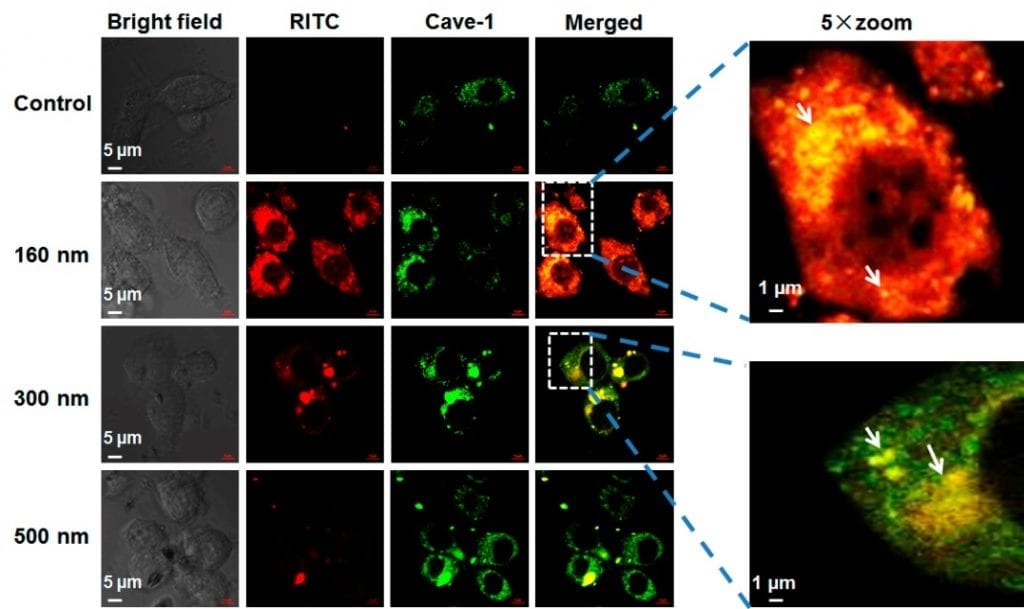One of the greatest challenges of our time is the early detection and effective treatment of cancer. Nanomedicine, which is a branch of nanotechnology, has been implemented in various ways to tackle this problem.
Endocytosis is the active transport of material, for example, nanomedicine, into a cell. In work recently reported by Chao Qin, Lifang Yin and their team at the School of Pharmacy, China Pharmaceutical University in Nanjing, China caveolae-mediated endocytosis is focused on as this mechanism bypasses the acidic endosomes and lysosomes that would degrade the nanomedicine. This results in the delivery of a greater amount of active drugs with more efficient and immediate access to intracellular targets.
Qin, Yin and team worked with paclitaxel nanosuspensions (PTX-Ns) and specifically investigated the importance of the size of these rod-shaped particles. PTX is one of the most widely used drugs for cancer treatment. They discovered that the delivery of PTX-Ns to cancer cells within solid tumors is strongly size-dependent. A decrease in the size of the PTX-Ns from 500 to 160 nm significantly enhanced cellular internalization and thus promoted cancer cell apoptosis due to the participation of caveolae-mediated endocytosis. In addition their work demonstrated that 1) the size reduction of PTX-Ns did not alter the tumor accumulation, but resulted in prolonged retention in the tumor site; 2) smaller PTX-Ns could dramatically increase the systemic exposure and significantly prolong the circulation time; and 3) PTX-Ns with a size not greater than 200 nm could significantly inhibit tumor growth. These new insights will assist in the design and optimization of nanosuspension formulations for disease therapy.

















